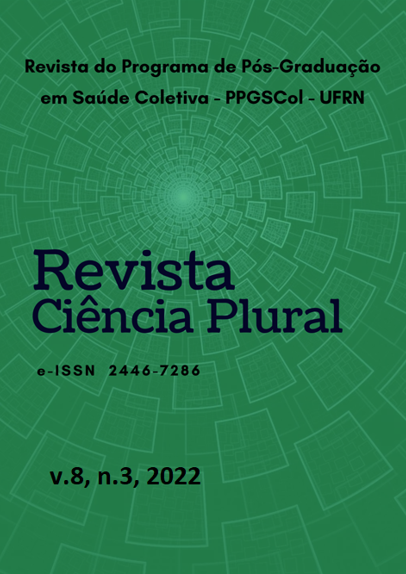EDUCAÇÃO ALIMENTAR E NUTRICIONAL PARA CRIANÇAS, GUIADA POR APLICATIVO
DOI:
https://doi.org/10.21680/2446-7286.2022v8n3ID27950Resumo
Introdução: A formação dos hábitos alimentares ocorre principalmente nos primeiros anos de vida. Nesse período, recomenda-se o aleitamento materno e a introdução de alimentos adequados. Esses fatores associados a um estilo de vida saudável são importantes para a prevenção da obesidade infantil. Para que essas informações cheguem ao público-alvo, recursos tecnológicos são cada vez mais importantes para que o processo de Educação Alimentar e Nutricional (EAN) seja eficaz. Objetivo: O objetivo foi elaborar o design instrucional do aplicativo AlimentAR, usando Realidade Aumentada (AR) direcionado para EAN com crianças de até dois anos. Metodologia: A concepção do design instrucional seguiu a Análise, Design, Desenvolvimento, Implementação e Avaliação. A etapa de análise incluiu diagnóstico situacional e/ou identificação de problemas que necessitam de intervenção. No processo de design, o foco estava na estrutura e nos objetivos educacionais. No desenvolvimento, ocorreu seleção de conteúdo, formatação, elaboração de recursos didáticos e storyboard. As etapas de implementação e avaliação serão tratadas em estudo posterior. Resultados: Neste sentido, o design instrucional foi desenvolvido de forma sistemática seguindo metodologia proposta. O produto prevê projeção de imagens de alimentos em AR, de acordo com necessidade nutricional da criança, considerando o Guia Alimentar para Crianças até 2 anos e a Ficha de Marcador de Consumo Alimentar para crianças até seis meses e crianças de seis a 23 meses. Conclusões: Conclui-se que a utilização da AR associada à abordagem transdisciplinar pode ser uma possível estratégia para a elaboração de instrumento de EAN com foco na formação de hábitos alimentares saudáveis e prevenção da obesidade infantil.
Downloads
Downloads
Publicado
Como Citar
Edição
Seção
Licença
Copyright (c) 2022 Revista Ciência Plural

Este trabalho está licenciado sob uma licença Creative Commons Attribution-NonCommercial-ShareAlike 4.0 International License.
À Revista Ciência Plural ficam reservados os direitos autorais referente a todos os artigos publicados.

 Português (Brasil)
Português (Brasil) English
English Español (España)
Español (España)













